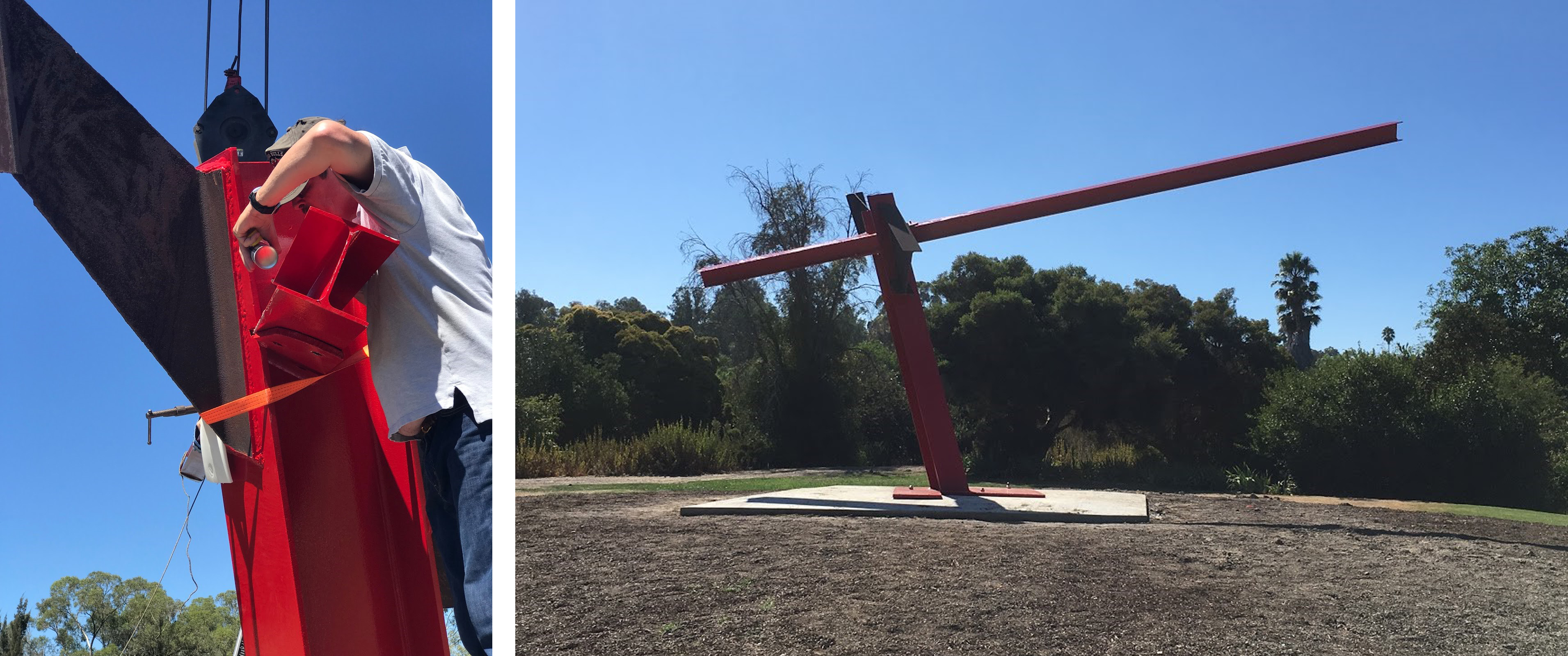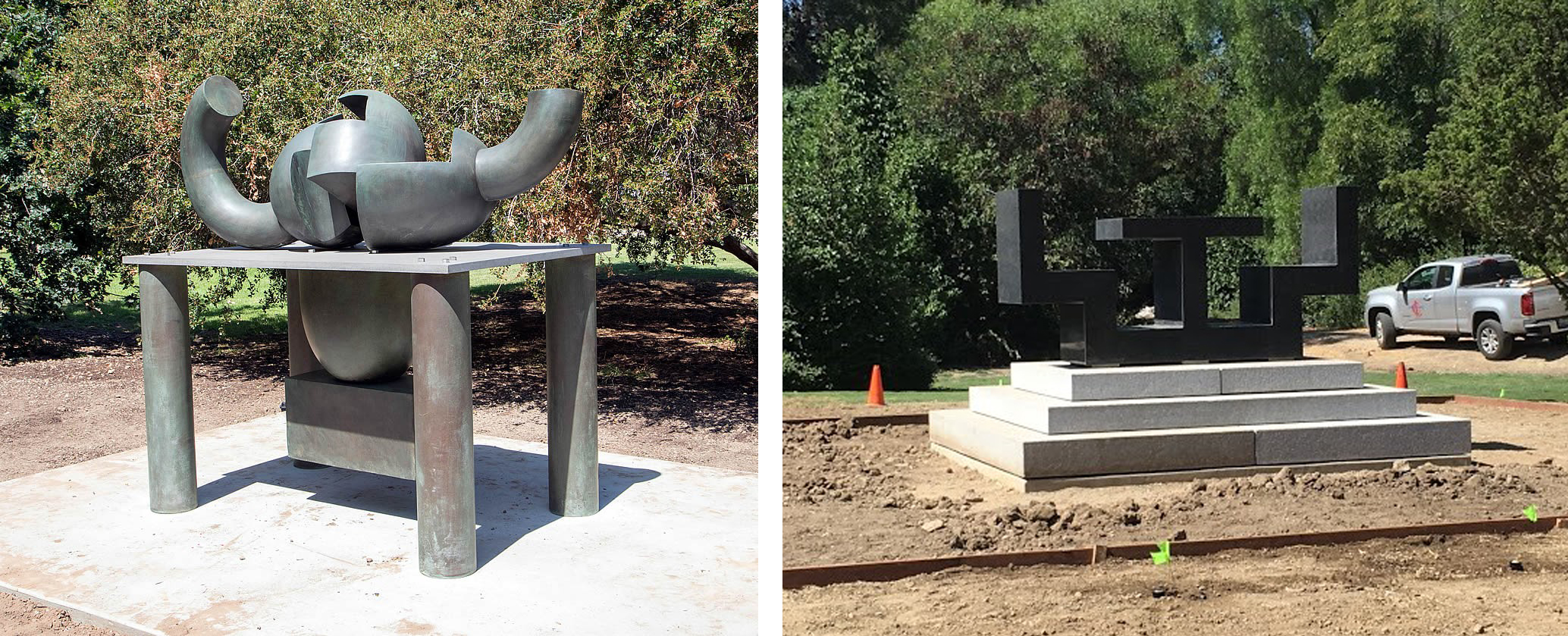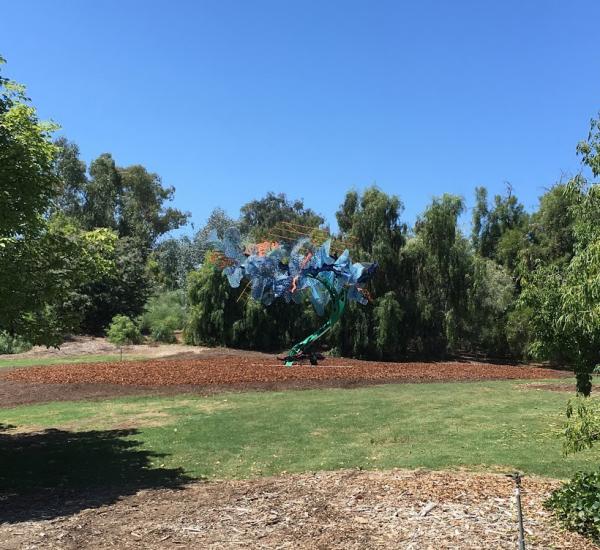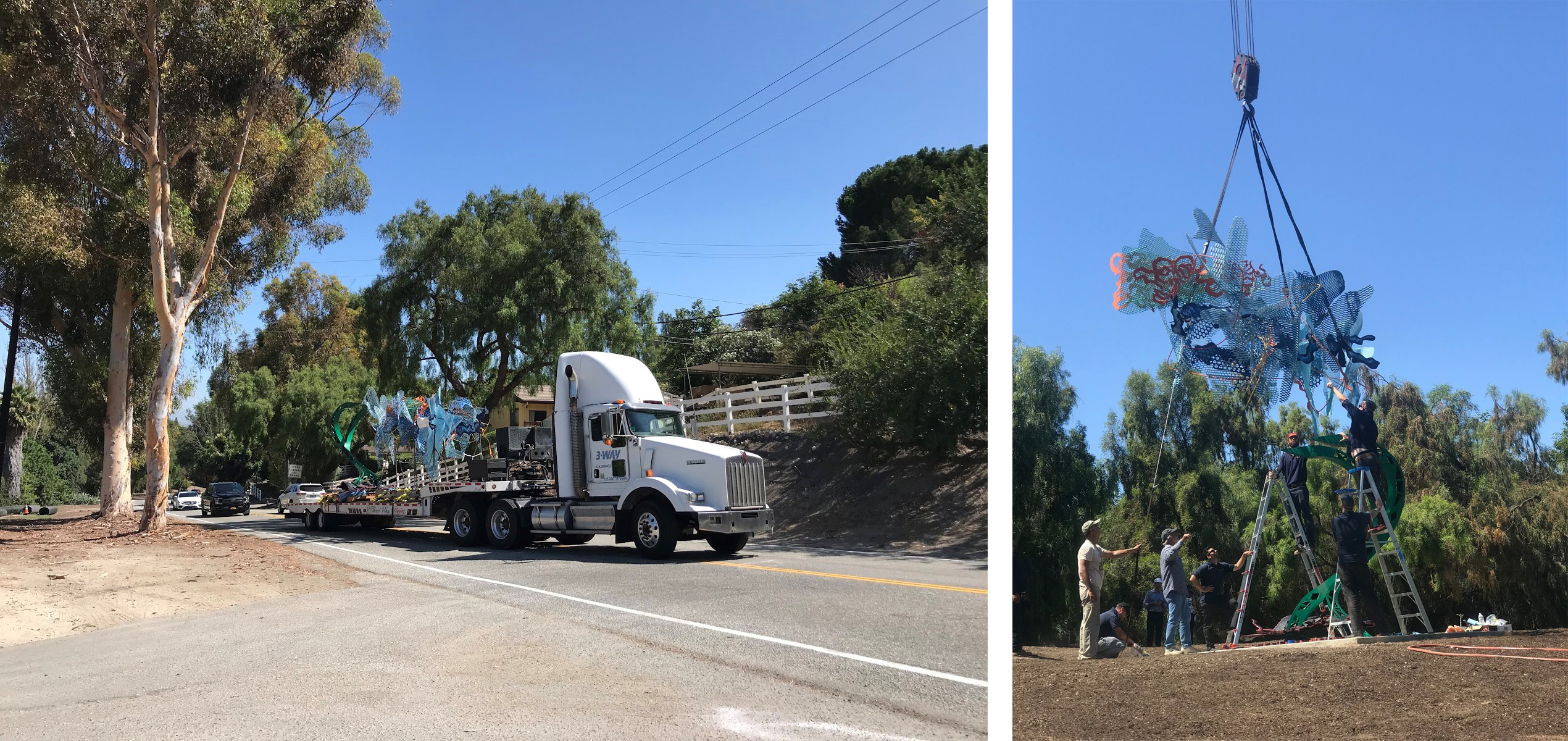It was a little before 11 am on a Tuesday, under the blazing August sun, and my colleague, Megan Smith, LACMA’s registrar of outgoing loans, turned to me in her light Texas drawl and said, “I called Dan last night just to triple check. He said to me ‘not to worry Megan, I got this.’” I looked at her and understood: if Dan said he could direct a 48-foot drop deck trailer carrying the sculpture Trace by Nancy Graves around a bend and over a depression that led onto the fire road of the South Coast Botanic Garden, then he could, and our installation would continue as planned. We immediately moved on, and looked to the road to await the truck.
That morning, our expert team of art handlers had already installed the base of another sculpture—the fun and fantastic Four Lines Oblique Gyratory - Square by George Rickey—and the Graves, a much more complicated installation requiring a crane, was up next. As the truck driver pulled in—and after some direction on the ground from Dan—the group’s caravan of pickup trucks, golf carts, box trucks, and cars slowly led the truck to the far reaches of the garden where Trace, the second of LACMA’s six outdoor sculptures scheduled to be installed that day at the garden, would be placed.
The museum’s relationship to the county, and our responsibility to the vast and varied communities we serve, has been fostered in recent years by increased sharing of LACMA’s treasures beyond our campus at Wilshire Boulevard. Among these initiatives has been a plan to place outdoor sculpture into public spaces throughout L.A. County, with an eye toward accessibility and a broadened audience. After two-and-a-half years of planning, our installation at the South Coast Botanic Garden was the largest of these projects initiated to date, consisting of a group of six large-scale modern and contemporary sculptures intended for the beautiful site in Palos Verdes, one of L.A. County’s best kept secrets.

Dan was our lead crane operator over the planned three-day installation, and he was arguably the most experienced large-scale art installer among a team that fluctuated between six and 10 people, depending on the sculpture and the time. Working in the unforgiving sun over the three long days, with the input of LACMA’s head of objects conservation, John Hirx, the team carefully, thoughtfully—and most importantly, safely—installed the six sculptures as planned. John had spent the past few years cleaning the sculptures and preparing the objects for installation. Through a combination of invisible supports and enormous bolts, Holly Rittenhouse, LACMA’s senior mountmaker, ensured the works had safe and secure placements.

The Voulkos and the Graves had been on view at LACMA until they were moved for this project, and their new settings in the garden immediately gave them new life. The Rickey and di Suvero were last on view at Wilshire Boulevard some 15 years ago, and the Nakian nearly 30 years ago. The Artschwager is making its debut since its arrival at LACMA in 1997. In response to each of these sculptures, the South Coast Botanic Garden deployed its own team of landscape designers, structural engineers, and project managers to create unique settings and plant palettes for each sculpture, resulting in a careful consideration of art and nature.

Most museums of LACMA’s size and scope have a large percentage of their works in storage. This installation did not simply guarantee an opportunity to have these works on view, but the character of the site—a place not traditionally associated with art—will broaden the audience exposed to these pieces. This is perhaps the most rewarding aspect of an installation like this: an understanding that for years to come, visitors who might never have seen a sculpture of this type will make a surprise discovery, hidden among the Botanic Garden’s amazing landscape.
The LACMA works in Hide and Seek: Art Meets Nature will be on view for the next 10 years at the South Coast Botanic Garden.




